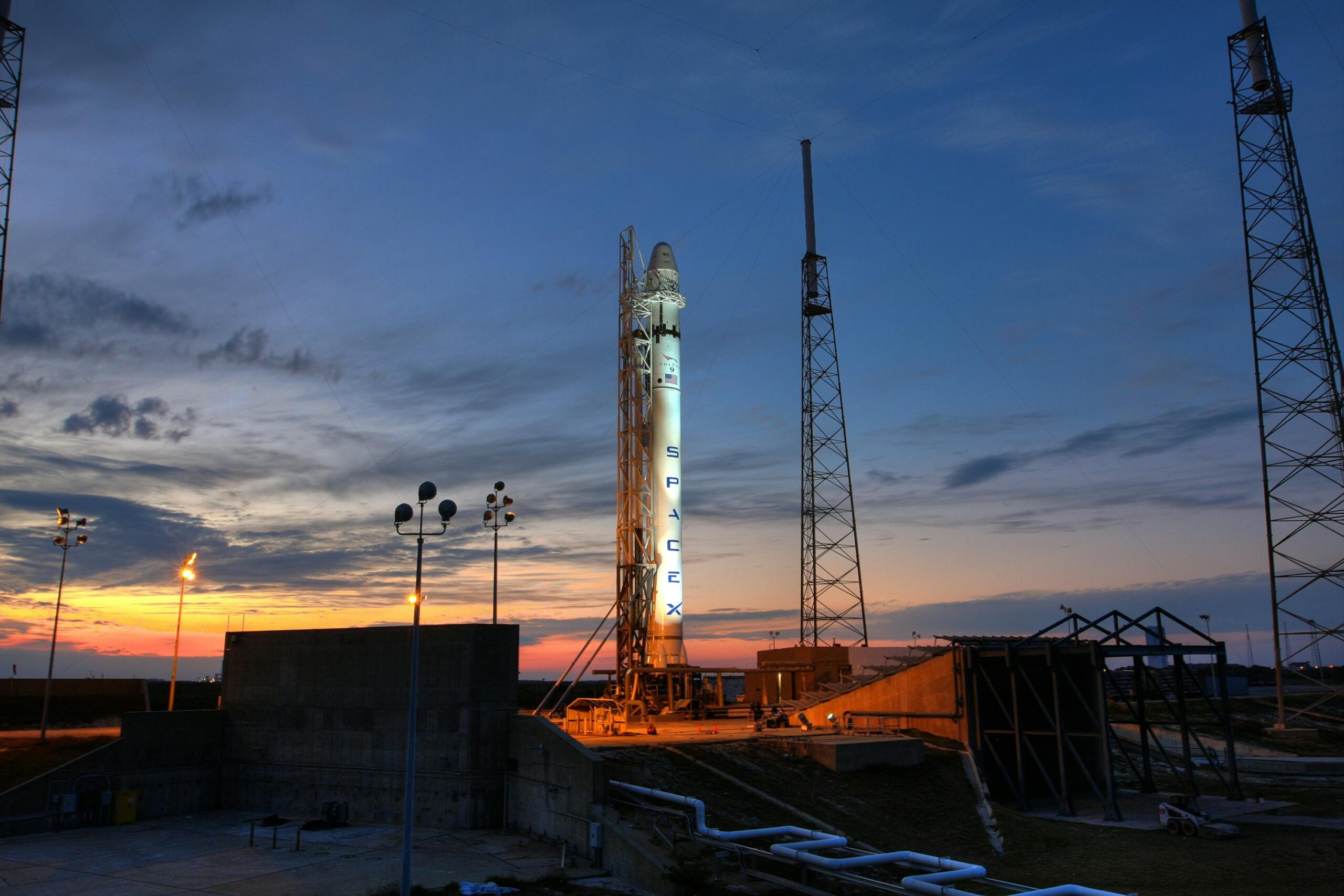SPACE LAUNCHES 2025
2025 is set to be a landmark year in humanity’s journey beyond Earth, with significant missions and groundbreaking projects planned by space agencies and private companies worldwide. So get ready for an exciting year in space exploration with our lineup of groundbreaking space launches in 2025 to keep on your radar.
1. NASA’s Artemis II Mission
One of the most eagerly awaited events of 2025 is NASA’s Artemis II mission. In this highly anticipated return to the Moon, Artemis II will see four astronauts venture on a 10-day journey to test the Space Launch System (SLS) rocket and Orion spacecraft, a crucial step towards NASA’s planned lunar landing with Artemis III in 2026. Boeing successfully delivered the largest component of the SLS rocket designated for Artemis II in July 2024.
NASA’s Artemis Program has been subject to delays, with both Artemis II and III missions being postponed by nearly a year, but we remain hopeful that we’ll witness a successful and pioneering step for NASA in 2025.
2. SpaceX’s Starship Missions
Elon Musk’s SpaceX continues to push the boundaries of space travel with its Starship spacecraft. In 2025, SpaceX plans to conduct several Starship missions, including an uncrewed cargo mission to Mars. This mission aims to demonstrate the capability of the Starship system for interplanetary travel and lay the groundwork for future manned missions to the Red Planet. Additionally, SpaceX is working on lunar missions as part of NASA’s Artemis program, and 2025 could see significant milestones in this partnership.
3. China’s Lunar and Mars Missions
China’s space agency, CNSA, has ambitious plans for 2025 which will have a huge impact on their long-term missions to the Moon and Mars. 2025 is likely to see the debut of China’s reusable rockets, regarded as key to China’s plans for crewed missions to the Moon by 2030. Tianwen-2, currently planned to launch in May 2025 for a 10-year mission, will closely observe a comet whilst in orbit before landing on an asteroid and collecting samples. The Tianwen missions, also known as the Planetary Exploration of China, is an ongoing program to explore the planets of the Solar System, culminating in a crewed mission to Mars in the 2030s.
Additionally, China is making strides in its Lunar Exploration Program, often referred to as the Chang-e Project. The CNSA is working towards its Chang’e 7 launch in 2026, which aims to explore the lunar South Pole, focusing on surface and subsurface investigations.
4. India’s Gaganyaan Missions
The Indian Space Research Organisation (ISRO) is set to make history in 2025 with its bold Gaganyaan missions. Commencing in December 2024, the ISRO has planned three uncrewed test flights, a program to develop the technology required to hopefully launch India’s first manned spaceflight. Planned for late 2025, the Gananyaan-4 mission will send Indian astronauts, known as vyomanauts, into low Earth orbit for the first time.
This mission marks a significant milestone for India’s space program, demonstrating its capability to conduct human spaceflight and paving the way for future interplanetary missions. With a relatively small time-frame to conduct three uncrewed flights and one manned mission, the world’s space industry and the public’s eyes will be fixed on India space endeavours in 2025.
5. Blue Origin’s Orbital Reef
Blue Origin, founded by Jeff Bezos, is working on an ambitious project called Orbital Reef, a commercial space station intended to be a mixed-use business park in space. Orbital Reef aims to provide a versatile and sustainable environment for commercial, research, and tourism activities in low Earth orbit, coinciding with the retirement of the International Space Station at the end of this decade. With the station set to be operational by 2027, we would expect to see significant progress and key module launches in 2025, however news on the project has been rather quiet in 2024.
Perhaps, Blue Origin is more likely to make headlines with it’s MK1 Lunar Lander, a pathfinder mission scheduled for a 2025 launch. The success of this mission could have a bearing on their inclusion in later Artemis missions, with their MK2 varient set to carry Astronauts for Artemis V.
6. Rocket Lab’s Venus Life Finder Mission
Rocket Lab, a small satellite launch company, is venturing into interplanetary missions with its planned uncrewed Venus mission scheduled for a 2025 launch. This first, private Venus mission aims to send a small probe to study Venus’ atmosphere and search for signs of life, specifically in the planet’s upper cloud layers where conditions might be more hospitable. With an original launch window of May 2023, we now expect Rocket Lab’s Venus Mission to join the list of space launches 2025.
These missions reflect the growing collaboration between international space agencies and private companies, each contributing unique capabilities and innovations to the collective endeavour of space exploration.
2026 and Beyond?
It’s likely that some of these scheduled space launches in 2025 will be delayed, here are a few that have already missed out on a 2025 date.
NASA’s Artemis III Mission
NASA’s Artemis III Mission was originally on our Space Launches 2025 watch list, but is now scheduled for launch in September 2026 at the earliest. This mission aims to return humans to the lunar surface for the first time since 1972. Artemis III will see astronauts land near the lunar South Pole, an area believed to contain water ice, which could be crucial for future long-term lunar missions. The mission will not only focus on scientific research but also on testing technologies that will be vital for future Mars missions. We eagerly await further news about this highly exciting space mission.
ESA’s ExoMars Rover Launch
The European Space Agency (ESA) was set to launch the ExoMars Rover, named Rosalind Franklin, in 2025. This mission aims to search for signs of past life on Mars and understand the history of water on the planet. The rover is equipped with a drill capable of reaching two meters below the Martian surface, where biosignatures from the planet’s ancient past might be preserved. The mission has been hampered by numerous delays, namely the cease of cooperation between ESA and Russian Roscosmos State Corporation in 2022. NASA is now supporting in the procurement of a US launch vehicle, with the mission launch date pushed back to 2028.
Are you interested in discussing space launches with the global space community? Join us at the Farnborough International Space Show, taking place 19-20 March 2025 in Hampshire, UK.


